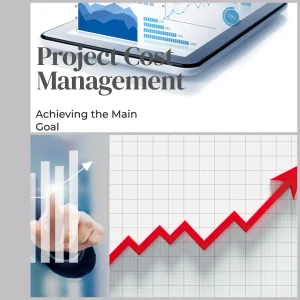Introduction to Project Portfolio Management (PPM)
Project Portfolio Management (PPM) is a strategic approach that organizations use to manage and prioritize their projects in alignment with their overall business objectives. It involves the centralized management of one or more project portfolios, which includes the processes, methodologies, and tools necessary to analyze and select projects that will deliver the most value to the organization.
Definition and Overview of Project Portfolio Management
PPM can be defined as the process of selecting, prioritizing, and managing a portfolio of projects to achieve specific strategic objectives. This approach allows organizations to evaluate the potential return on investment of various projects, ensuring that resources are allocated effectively and that projects align with the company’s strategic goals. By implementing PPM, organizations can streamline their project management processes, maximize resource utilization, and enhance decision-making capabilities, ultimately leading to improved project outcomes and organizational success [1][2].
Importance of PPM in Aligning Projects with Organizational Strategy
The significance of PPM lies in its ability to ensure that all projects undertaken by an organization are aligned with its strategic vision. This alignment is crucial for several reasons:
- Resource Optimization: PPM helps organizations allocate resources more effectively by prioritizing projects that contribute the most to strategic goals, thereby minimizing waste and maximizing returns [2][3].
- Strategic Decision-Making: By providing a comprehensive view of all projects, PPM enables leaders to make informed decisions about which projects to pursue, adjust, or terminate based on their alignment with organizational objectives [1][2].
- Risk Management: PPM facilitates better risk assessment and management by allowing organizations to evaluate the potential risks associated with each project and make adjustments as necessary to mitigate those risks [3][4].
Challenges of Traditional PPM Frameworks
Despite its advantages, traditional PPM frameworks often face several challenges that can hinder their effectiveness:
- Rigidity: Traditional PPM approaches can be inflexible, making it difficult for organizations to adapt to changing market conditions or project requirements. This rigidity can lead to missed opportunities and suboptimal project outcomes [5][6].
- Siloed Thinking: In many organizations, project teams operate in silos, leading to a lack of communication and collaboration across projects. This can result in duplicated efforts and misalignment with strategic goals [5][6].
- Slow Decision-Making: Traditional PPM processes can be bureaucratic and slow, which may delay project initiation and hinder responsiveness to market changes [6][7].
Integrating agile methodologies into PPM frameworks can address these challenges by promoting flexibility, collaboration, and faster decision-making, ultimately enhancing the effectiveness of project portfolio management in achieving organizational goals.
Understanding Agile Methodologies
Agile methodologies have transformed the landscape of project management by introducing a flexible and iterative approach that contrasts sharply with traditional project management frameworks. This section will provide an overview of Agile principles and values, highlight the benefits of Agile methodologies in project execution, and explain how Agile fosters flexibility and responsiveness to change.
Overview of Agile Principles and Values
Agile is an umbrella term encompassing various methodologies, including Scrum, Kanban, and Lean, all of which share core principles and values. The Agile Manifesto emphasizes:
- Individuals and Interactions: Prioritizing people over processes and tools.
- Working Software: Delivering functional software frequently, with a preference for shorter timescales.
- Customer Collaboration: Engaging with customers throughout the project to ensure their needs are met.
- Responding to Change: Embracing change even late in development, allowing teams to adapt to evolving requirements.
These principles encourage teams to work collaboratively, maintain open lines of communication, and focus on delivering value to customers, which is essential for successful project portfolio management [10][12].
Benefits of Agile Methodologies in Project Execution
Implementing Agile methodologies within project execution offers several advantages:
- Enhanced Collaboration: Agile promotes maximum participation from all stakeholders, including project clients and sponsors, which leads to better alignment with project goals and objectives [11].
- Increased Visibility: Agile practices provide transparency in project progress, allowing teams to identify issues early and make necessary adjustments [11].
- Faster Delivery: By breaking projects into smaller, manageable increments (sprints), Agile teams can deliver functional components more quickly, leading to faster time-to-market [12].
- Risk Mitigation: Agile methodologies allow for continuous reassessment of project priorities and risks, enabling teams to pivot as needed and minimize potential setbacks [8].
How Agile Fosters Flexibility and Responsiveness to Change
One of the most significant advantages of Agile methodologies is their inherent flexibility. Agile frameworks encourage teams to:
- Iterate and Adapt: Agile promotes an iterative approach, where teams can continuously refine their processes and outputs based on feedback and changing requirements [10][12].
- Embrace Change: Agile methodologies are designed to accommodate changes in project scope or direction, allowing teams to respond swiftly to new information or market demands [12][15].
- Focus on Customer Needs: By involving customers throughout the project lifecycle, Agile ensures that the final product aligns closely with user expectations, enhancing satisfaction and reducing the likelihood of rework [11].
The Need for Integration: Agile Practices into Traditional PPM
In the evolving landscape of project management, the integration of agile methodologies into traditional Project Portfolio Management (PPM) frameworks has become increasingly essential. This section will explore the limitations of conventional PPM approaches, the enhancements agile practices can bring to decision-making and prioritization, and real-world examples of organizations that have successfully adopted this integration.
Identifying Limitations of Traditional PPM Approaches
Traditional PPM frameworks often struggle with rigidity and a lack of responsiveness to change. Some key limitations include:
- Inflexibility: Traditional PPM tends to follow a linear, waterfall approach, which can hinder the ability to adapt to changing project requirements or market conditions. This rigidity can lead to delays and missed opportunities for innovation [3].
- Slow Decision-Making: The hierarchical nature of traditional PPM can slow down decision-making processes, making it difficult for organizations to respond quickly to new information or shifting priorities [5].
- Limited Stakeholder Engagement: Conventional methods may not adequately involve stakeholders throughout the project lifecycle, leading to misalignment between project outcomes and stakeholder expectations [4].
How Agile Practices Can Enhance Decision-Making and Prioritization in PPM
Integrating agile practices into PPM can address these limitations and significantly enhance project outcomes. Key benefits include:
- Increased Flexibility: Agile methodologies emphasize adaptability, allowing project teams to pivot quickly in response to feedback and changing circumstances. This flexibility enables organizations to seize new opportunities and mitigate risks more effectively [3][13].
- Improved Collaboration: Agile practices foster a culture of collaboration and communication among team members and stakeholders. This collaborative environment enhances transparency and ensures that all voices are heard, leading to better-informed decision-making [4][13].
- Enhanced Prioritization: Agile frameworks, such as Scrum and Kanban, prioritize work based on value and urgency. This focus on delivering high-value features first allows organizations to allocate resources more effectively and maximize the return on investment [9].
Key Steps to Implement Agile in Project Portfolio Management
Integrating agile methodologies into traditional Project Portfolio Management (PPM) frameworks can significantly enhance flexibility and responsiveness to changing project demands. Here are actionable steps to facilitate this integration:
- Assessing the Current PPM Framework: Begin by conducting a thorough evaluation of your existing PPM processes. Identify areas where agile practices can be integrated to improve efficiency and adaptability. This assessment should focus on understanding how current workflows, decision-making processes, and resource allocations can be aligned with agile principles, such as iterative development and customer collaboration. By pinpointing specific gaps, organizations can create a tailored approach to incorporate agile methodologies effectively [1][3].
- Training and Coaching Project Managers and Teams: Once the assessment is complete, invest in training programs for project managers and teams to familiarize them with agile practices. This training should cover various agile methodologies, such as Scrum, Kanban, and Lean, emphasizing their application within the context of PPM. Coaching sessions can also be beneficial, providing ongoing support as teams transition to agile practices. This step is crucial for fostering a culture of agility and ensuring that all team members are equipped with the necessary skills to thrive in an agile environment [2][11].
- Adapting Portfolio Governance: Traditional governance structures may need to be re-evaluated to accommodate agile methodologies. This involves redefining roles, responsibilities, and decision-making processes to support a more flexible and responsive approach to project management. Agile governance should prioritize collaboration, transparency, and continuous improvement, allowing teams to adapt quickly to changes in project scope or priorities. By aligning governance with agile principles, organizations can enhance their ability to manage portfolios effectively while remaining responsive to stakeholder needs [5][6].
By following these key steps, organizations can successfully integrate agile methodologies into their project portfolio management frameworks, leading to improved flexibility and better alignment with business goals. This approach not only enhances project outcomes but also fosters a culture of innovation and adaptability within teams.
Tools and Techniques for Agile Project Portfolio Management
Integrating agile methodologies into traditional Project Portfolio Management (PPM) frameworks can significantly enhance flexibility and responsiveness to change. This section explores various tools and techniques that facilitate agile practices within PPM, providing valuable insights for Agile Coaches and Project Managers.
Overview of Software and Tools Supporting Agile Project Management
A variety of software tools are designed to support agile project management, each catering to different aspects of the agile process. Key tools include:
- Jira: A widely used tool that integrates with various project management applications, allowing teams to manage tasks, track progress, and collaborate effectively. It supports agile frameworks like Scrum and Kanban, making it versatile for different project needs [1].
- Trello: Known for its visual collaboration capabilities, Trello uses boards and cards to help teams organize tasks and projects. It is particularly useful for smaller teams or projects that require a straightforward approach to task management [1].
- Figma: While primarily a design tool, Figma facilitates collaboration among team members, especially in developing wireframes and prototypes, which is essential in agile environments where iterative design is crucial [1].
- Kanban Boards: These boards are essential for visualizing workflow and managing tasks in real-time. They help teams prioritize work and identify bottlenecks, enhancing overall project visibility [8].
Techniques for Visualizing Project Progress and Portfolio Health
Visual tools are vital for tracking project progress and maintaining portfolio health. Effective techniques include:
- Dashboards: Customizable dashboards provide a real-time overview of project metrics, allowing teams to monitor key performance indicators (KPIs) and overall portfolio health. They can display data such as project status, resource allocation, and timelines, enabling quick decision-making [6].
- Kanban Boards: As mentioned earlier, Kanban boards not only help in task management but also serve as a visual representation of project progress. They allow teams to see the status of various tasks at a glance, facilitating better communication and collaboration [8].
Best Practices for Using Metrics and KPIs in an Agile PPM Context
In an agile PPM context, the use of metrics and KPIs is crucial for measuring success and guiding decision-making. Best practices include:
- Focus on Customer Value: Metrics should be aligned with customer needs and stakeholder expectations. This ensures that the projects undertaken deliver maximum value and meet the specific requirements of users [4].
- Minimize Waste: Agile methodologies emphasize reducing waste through efficient resource utilization. Metrics should track resource consumption and identify areas for improvement, helping teams to streamline processes [4].
- Adaptability: Agile project management requires flexibility. KPIs should be regularly reviewed and adjusted based on project outcomes and changing circumstances, allowing teams to pivot as necessary [4].
- Communication: Regular updates and transparent communication about metrics and KPIs among team members foster a culture of accountability and continuous improvement [7].
By leveraging these tools and techniques, Agile Coaches and Project Managers can effectively integrate agile practices into their PPM frameworks, enhancing flexibility and responsiveness to project demands. This approach not only improves project outcomes but also aligns project goals with the dynamic needs of stakeholders.
Challenges and Solutions in Agile PPM Implementation
Integrating Agile methodologies into traditional Project Portfolio Management (PPM) frameworks can significantly enhance flexibility and responsiveness in project delivery. However, this transition is not without its challenges. Below are some common hurdles faced during the integration of Agile practices into PPM, along with strategies to overcome them.
Common Challenges Faced During Integration
- Resistance to Change: One of the most significant barriers to implementing Agile in PPM is the inherent resistance to change within organizations. Employees and management may be accustomed to traditional project management methods and may be hesitant to adopt new practices that Agile entails [1].
- Cultural Barriers: The shift to Agile requires a cultural transformation that emphasizes collaboration, transparency, and adaptability. Organizations often struggle with entrenched hierarchies and siloed departments that can impede the Agile mindset [6].
- Lack of Visibility and Collaboration: Successful Agile implementation relies heavily on visibility and collaboration among teams. However, many organizations face challenges in achieving this due to existing processes that do not support open communication and teamwork [6].
- Tool Integration Issues: Specialized tools used in traditional PPM may not integrate well with Agile project management tools, leading to complications in workflow and data management [8].
- Managing Expectations: Companies often have unrealistic expectations regarding the speed and ease of transitioning to Agile methodologies. There is no one-size-fits-all checklist for this transformation, which can lead to frustration and disillusionment [5].
Strategies for Fostering a Collaborative and Adaptive Organizational Culture
- Promote Open Communication: Encourage a culture of open dialogue where team members feel safe to express their ideas and concerns. Regular check-ins and feedback loops can help facilitate this communication [6].
- Training and Education: Provide training sessions for employees at all levels to familiarize them with Agile principles and practices. This can help reduce resistance and build a shared understanding of Agile methodologies [11].
- Leadership Support: Leadership plays a crucial role in fostering an Agile culture. Leaders should actively support Agile initiatives and model the behaviors they wish to see in their teams, such as collaboration and adaptability [11].
- Incremental Implementation: Rather than a complete overhaul, consider implementing Agile practices incrementally. This allows teams to adapt gradually and provides opportunities to address challenges as they arise [5].
Measuring Success: Metrics for Agile Project Portfolio Management
Integrating Agile methodologies into traditional Project Portfolio Management (PPM) frameworks can significantly enhance flexibility and responsiveness to change. To effectively measure the success of this integration, it is essential to establish key performance indicators (KPIs) that reflect agility within project portfolios. Here are some critical metrics and considerations for evaluating the effectiveness of Agile practices in PPM:
Key Performance Indicators Reflecting Agility
- Velocity: This metric measures the amount of work completed in a given time frame, typically a sprint. It helps project managers understand the team’s capacity and predict future performance, making it a vital indicator of agility in project execution [12].
- Lead Time: This measures the time taken from the initiation of a project to its completion. A shorter lead time indicates a more agile process, allowing teams to respond quickly to changes and deliver value faster [12].
- Defect Escape Rate: This KPI tracks the number of defects found after a product has been released. A lower defect escape rate suggests that Agile practices, such as continuous testing and feedback, are effectively improving product quality [12].
- Planned-to-Done Ratio: This ratio compares the amount of work planned against what has been completed. A high ratio indicates that the team is effectively managing its commitments and adapting to changes, which is a hallmark of Agile methodologies [6].
- Return on Investment (ROI): This crucial KPI assesses the financial impact of Agile projects by comparing the benefits gained against the costs incurred. A positive ROI indicates that Agile practices are delivering value and justifying the investment [14].
Evaluating the Impact of Agile Integration
To evaluate the impact of Agile integration on project outcomes, organizations should consider the following approaches:
- Success Criteria Mapping: For each initiative within the project portfolio, establish clear success criteria that align with Agile principles. This could include metrics such as user adoption rates and the percentage of automated test coverage, which provide insights into how well Agile practices are being implemented [2].
- Feedback Loops: Implementing regular feedback loops is essential for assessing the effectiveness of Agile practices. This can involve retrospectives and stakeholder reviews that allow teams to reflect on their performance and make necessary adjustments [1].
- Continuous Improvement: Emphasizing a culture of continuous improvement is vital in Agile PPM. By regularly reviewing performance metrics and adapting processes based on feedback, organizations can enhance their agility and responsiveness to changing project demands [1].
Importance of Continuous Improvement and Feedback Loops
Continuous improvement and feedback loops are foundational to Agile methodologies. They enable teams to:
- Adapt Quickly: By regularly assessing performance and gathering feedback, teams can quickly pivot and adjust their strategies to better meet project goals and stakeholder expectations [1].
- Enhance Collaboration: Frequent communication and feedback foster a collaborative environment where team members can share insights and learn from each other, ultimately leading to improved project outcomes [1].
- Drive Innovation: A focus on continuous improvement encourages teams to experiment with new ideas and practices, driving innovation within the project portfolio and enhancing overall performance [1].
Conclusion
In the rapidly evolving landscape of project management, integrating Agile methodologies into traditional Project Portfolio Management (PPM) frameworks has emerged as a pivotal strategy for enhancing flexibility and responsiveness. This integration not only streamlines project execution but also aligns project outcomes more closely with customer needs and market demands.
In conclusion, the integration of Agile methodologies into Project Portfolio Management is not only beneficial but necessary for organizations aiming to thrive in a dynamic environment. By embracing flexibility, fostering collaboration, and committing to continuous learning, Agile Coaches and Project Managers can lead their teams toward greater success in project delivery and strategic alignment.
Find out more about Shaun Stoltz https://www.shaunstoltz.com/about/
This post was written by an AI and reviewed/edited by a human.



